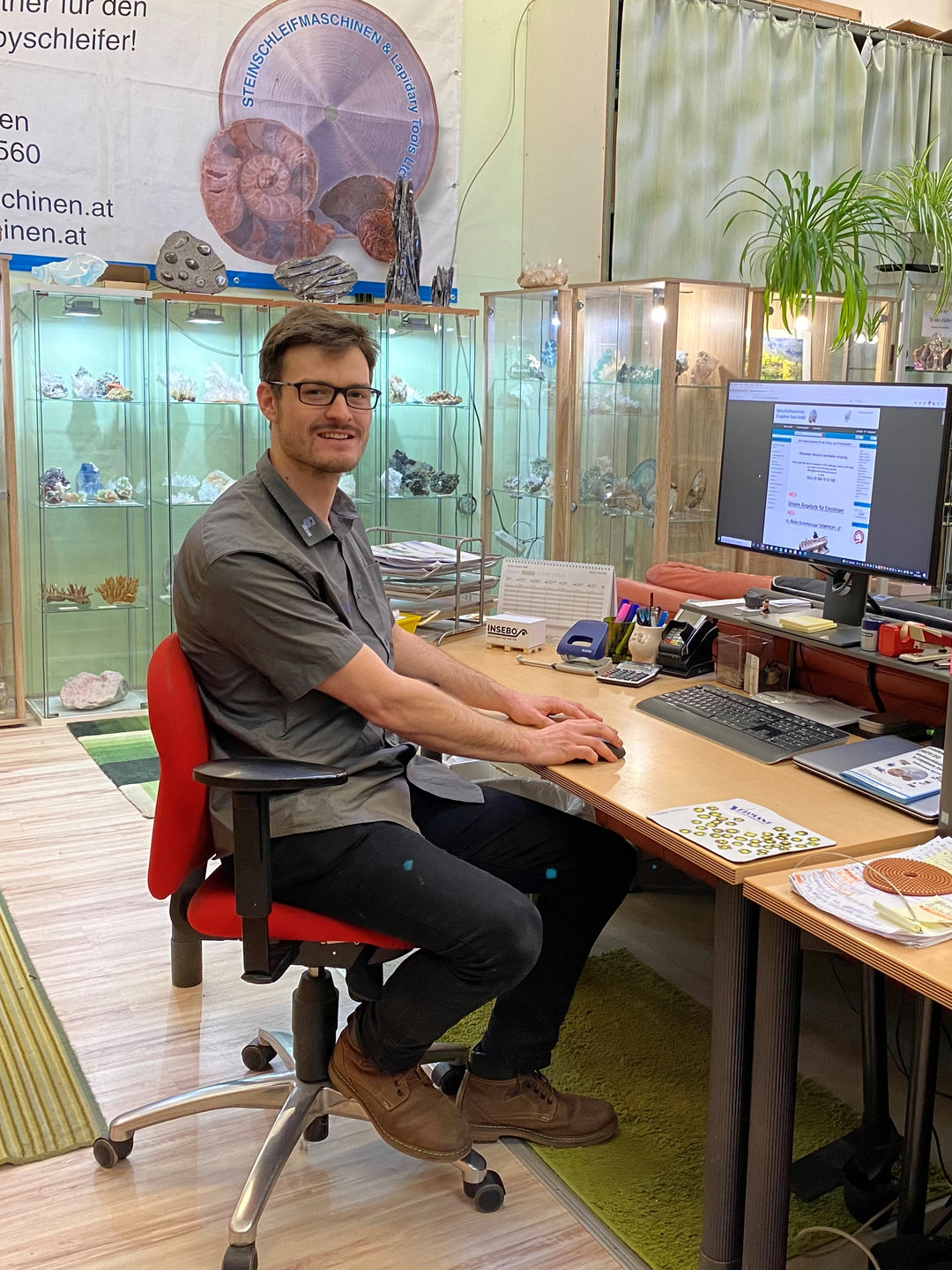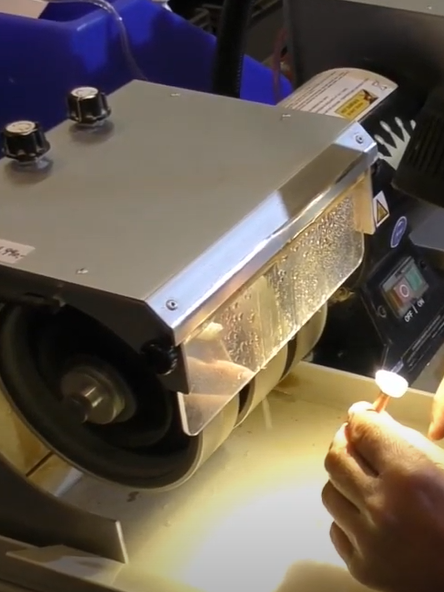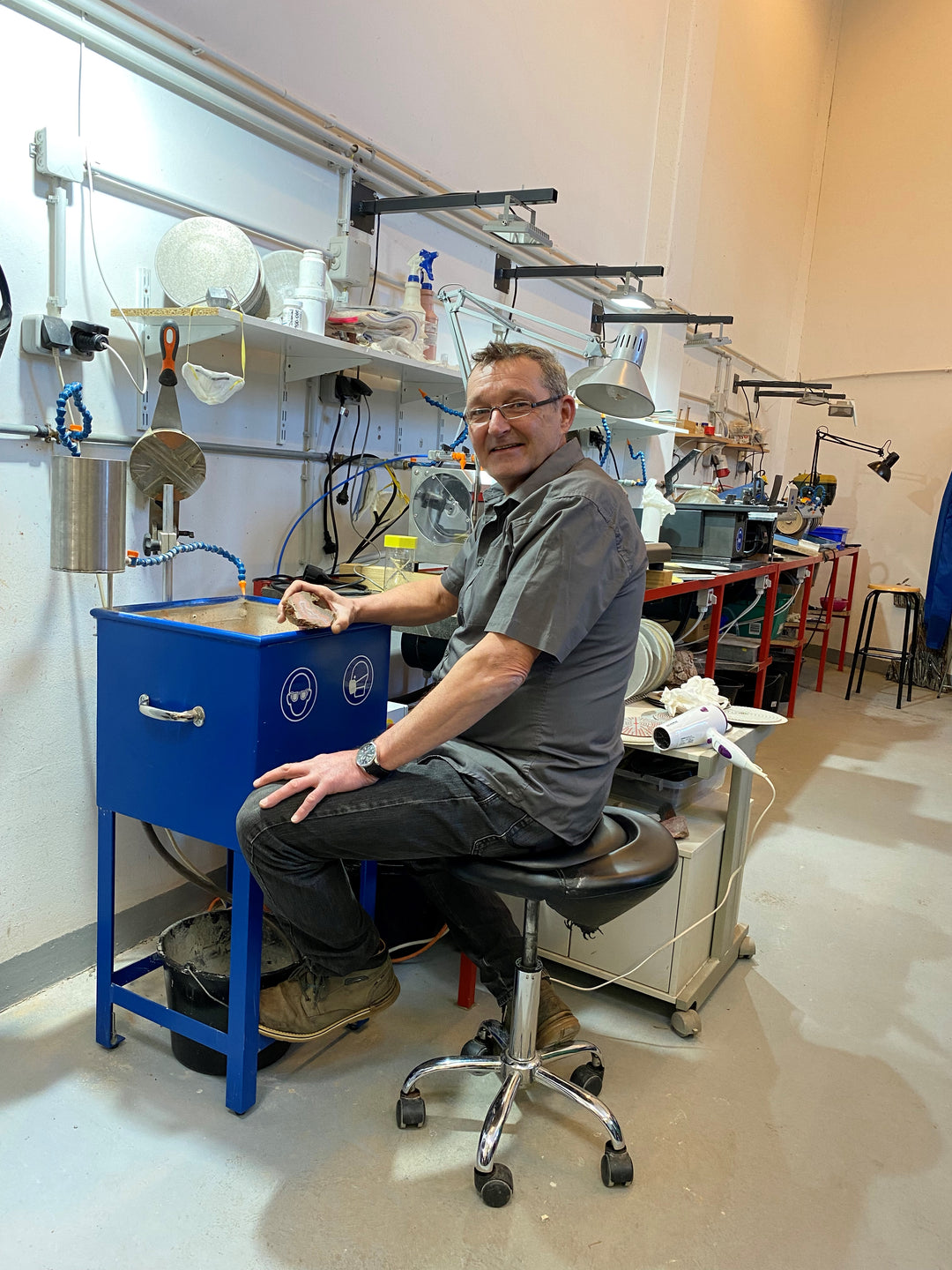News

1. Introduction
1.1 History
The processing of stones, minerals and fossils has a long tradition. As early as the Stone Age, people made tools out of hard stones such as flint, jasper and the like in order to produce knife blades, weapons, etc. in the simplest way by manually giving these stones the appropriate shape for various purposes. As early as the Middle Ages, colored stones, semi-precious and precious stones were processed into jewelry and decorative items. The processing, i.e. grinding and polishing, of these stones was a complex process back then, as everything had to be done by hand in the beginning. Guilds emerged that specialized in stone processing. At that time, only real minerals, colored stones, semi-precious and precious stones were processed, as synthetic production was not possible. The polished stones used to have a very high value because they were used in jewelry, crowns, garment clasps, etc. and were not accessible or affordable to everyone. The grinding and polishing process, later powered by water power and sandstone wheels, was closely guarded by the grinders and was a strenuous and time-consuming process. Great exhibits such as thin-walled bowls, cups, cameos and much more. can be admired today, among other places, in the gemstone museum in Idar-Oberstein. These artists deserve the highest respect - considering the tools they used were still simple at the time.



